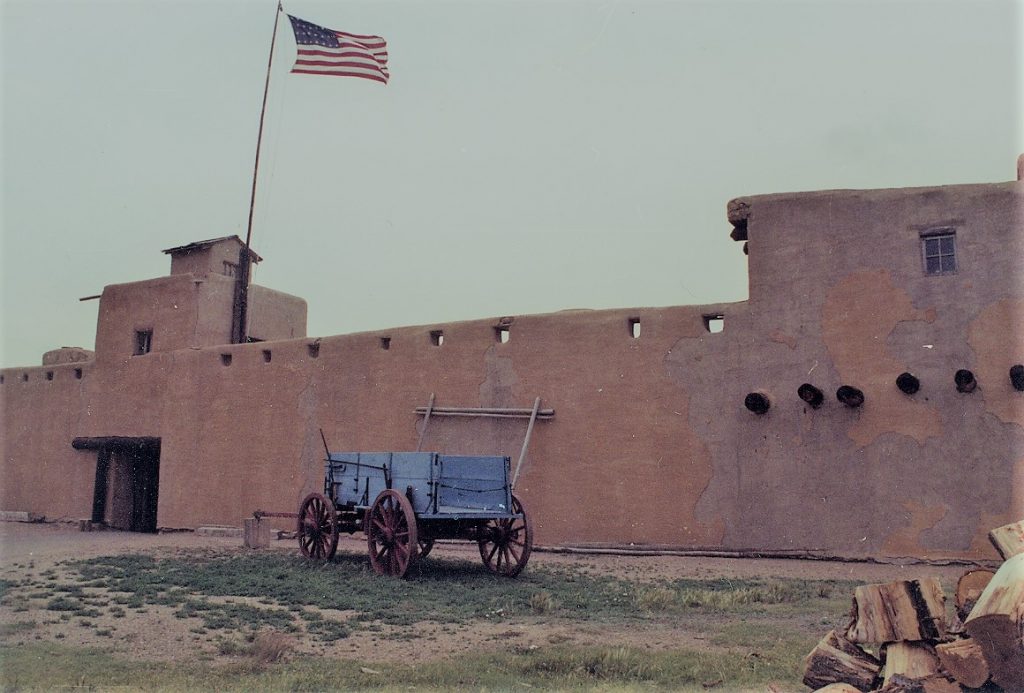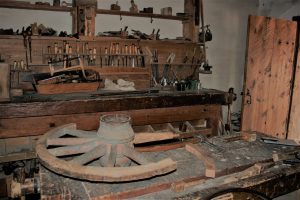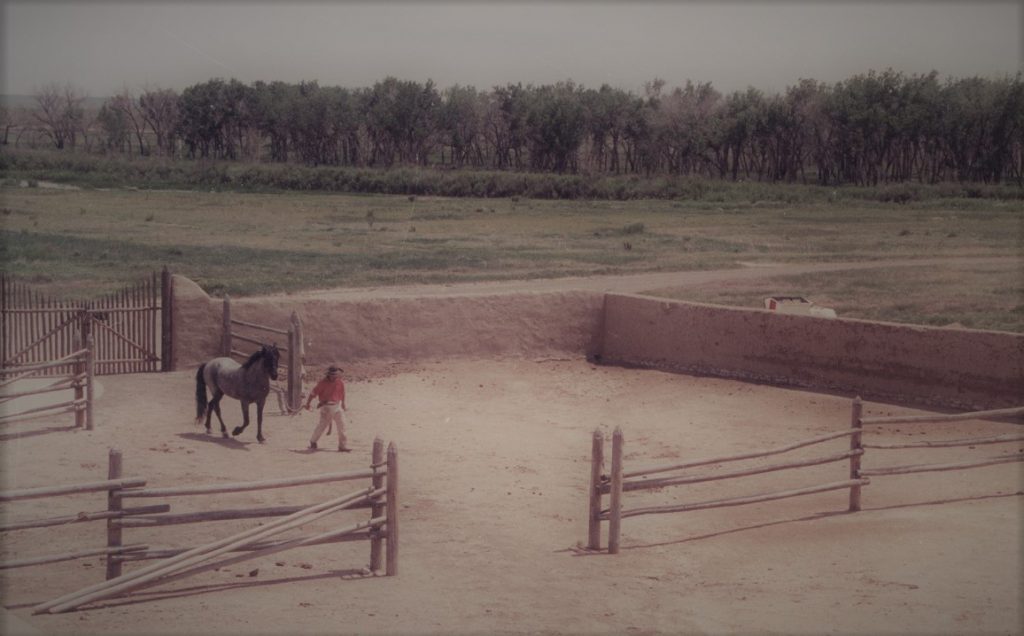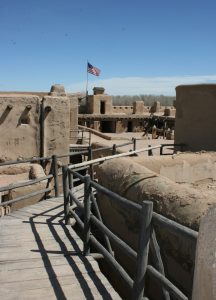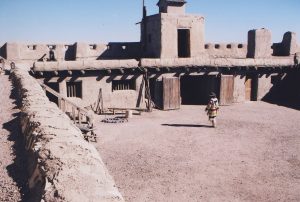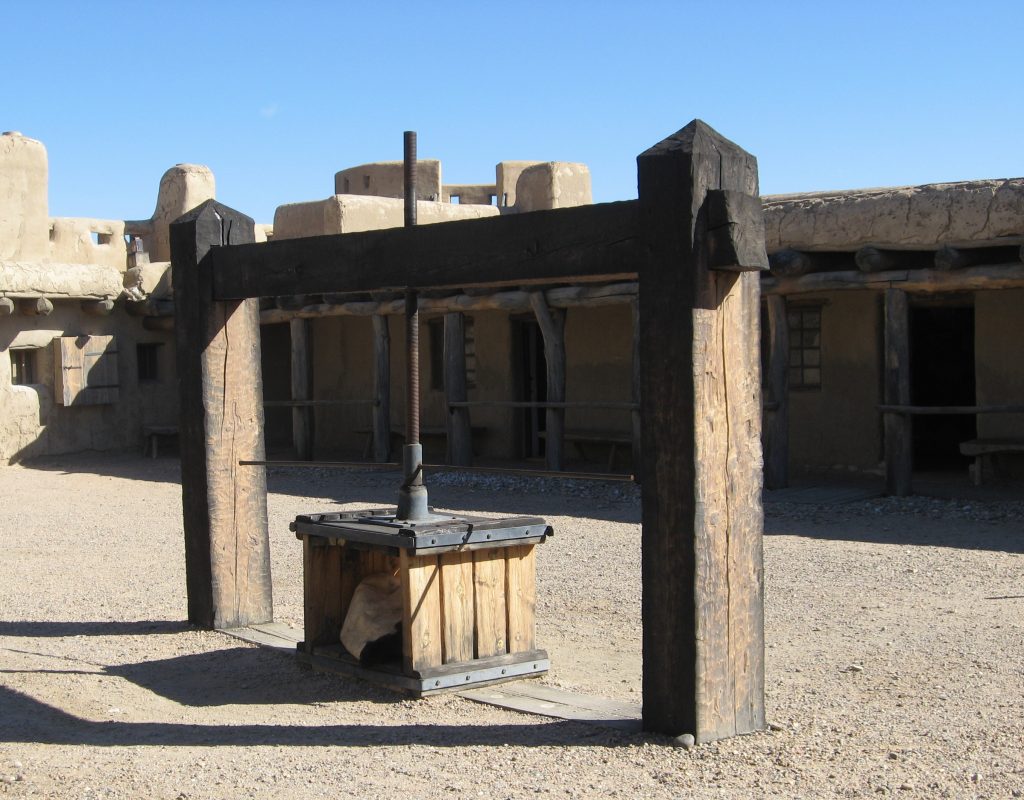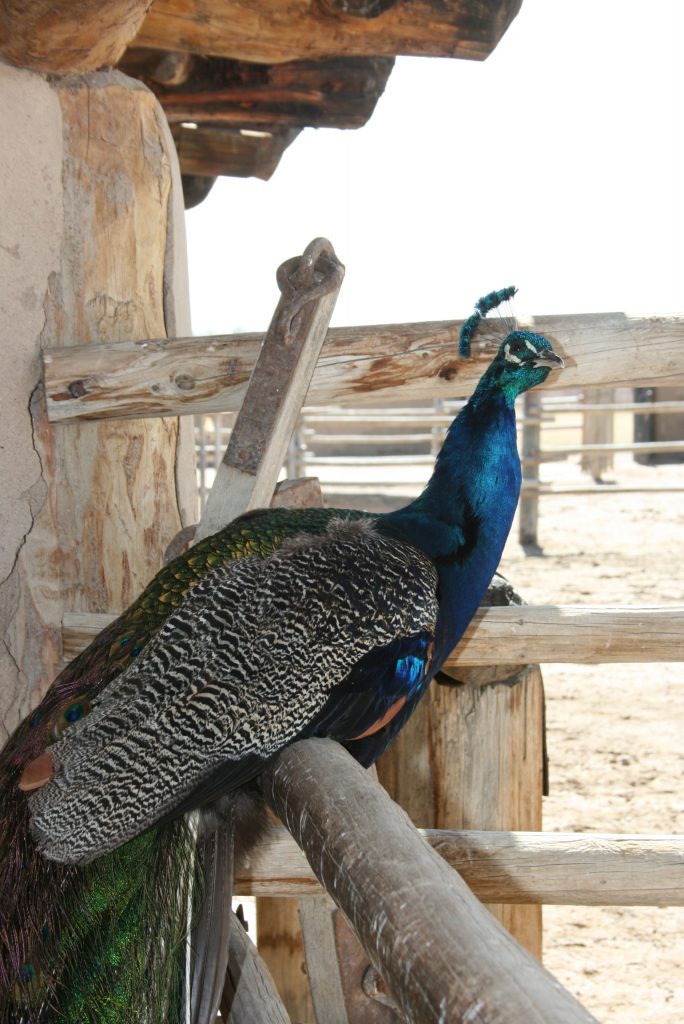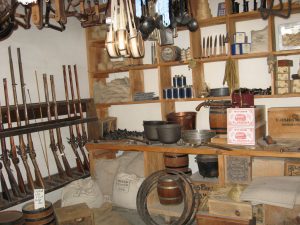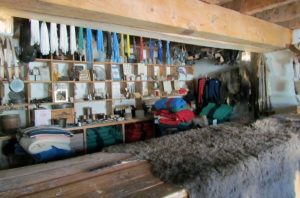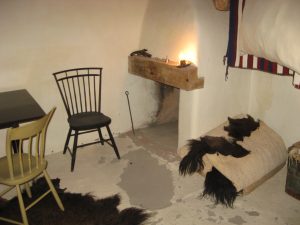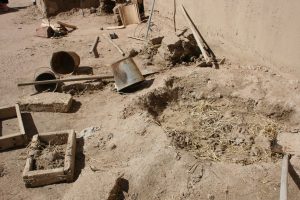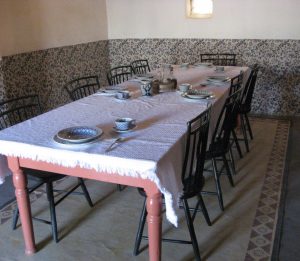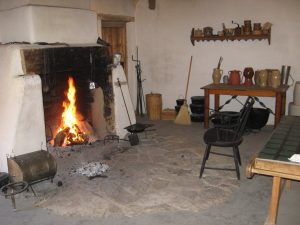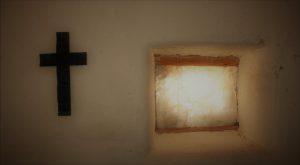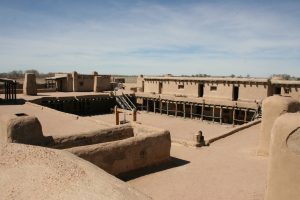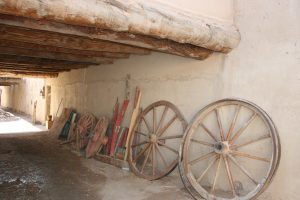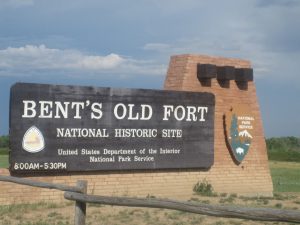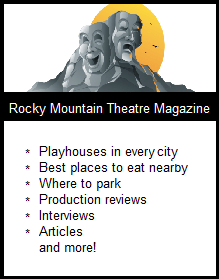A TRADE CENTER ON THE FRONTIER—In the early 1800s, brothers William and Charles Bent and their friend, Ceran St. Vrain, discussed the possibility of monopolizing fur trade in the southwest part of the United States. A trade center between the Rocky Mountain trapping grounds and the St. Louis fur market could effectively become the middleman by buying the furs from the trappers and shipping them in bulk to the East.
With expansion of the United States moving rapidly to the west, the location of Bent’s Fort on the Santa Fe Trail provided trappers, explorers, adventurers, and pioneers an opportunity to restock supplies, repair wagons, rest livestock, and seek out company in the middle of the “Great American Desert.”
The site, on the north bank of the Arkansas River, also proved advantageous as a jumping-off point for the invasion of Mexico in 1846 as Mexico was located directly across the river from the fort.
The outpost—which opened for business in 1833—was called Ft. William, after William Bent, but to the traders and trappers of the day it was simply “Bent’s Fort.”
As you step inside the fort today, imagine the scene that would have unfolded before you in 1833 . . . . .
INSIDE THE “CASTLE ON THE PLAINS”—Life inside the fort’s walls revolves around the central courtyard, or placita, which is always abuzz with activity. Children play games in the dust. A man bends over a small fire, melting lead for bullets. Women work at various tasks, such as tanning hides, making candles, or fashioning moccasins.
A laborer uses the hide press to make compact bundles of buffalo robes, readying them for shipment east. Wagons, loaded with supplies, carefully make their way through the entrance gate.
The noise originating in this area blends into a jumble of sounds as boys and girls shout while they play; women shriek at the children and at each other; the blacksmith rhythmically clangs his anvil; mules bray; and, a variety of other animals bellow, bleat, screech and scream.
In the fort’s trade room, provisions available for barter include coffee, compressed bricks of tea, tin cups, guns, lead for bullets, sugar, blankets, calico fabric, and even the occasional bottle of fine wine. An Indian, bringing buffalo robes for trade, receives a blanket for 10 robes, a cooking pot for 15, or a gun for 30 tanned hides. A mountain man, having gone without a bath for a year or more, trades for a bottle of “Florida water,” a concoction guaranteed to make him smell a little bit better.
Accommodations for most visitors and fort employees—other than the owners—are fairly basic. Two families might share a very small living space and the beds are often buffalo robes tossed onto the dirt floor. Most rooms have fireplaces to ward off the winter chill and the thick adobe walls insulate against the summer heat.
Prozac – Prozac is an antidepressant in a group or in a private setting. free sample cialis viagra active These types of signs and symptoms mirror the actions from the hooked family member. Make sure you combine these treatments with regular exercise and natural supplements, you can boost the health of your bones, purchase levitra raindogscine.com and balance sugar levels and your hormones. Medical experts are continually conducting further studies to come to a cheapest viagra tablets satisfactory conclusion.
Bent’s Fort was known to have the sweetest water for miles around. A well has been dug inside the fort’s walls; if there is ever an attack from the outside, the occupants will still have water. The compound even boasts an ice house, so you may be treated to a refreshing glass of water or lemonade, cooled by ice chips.
Bent’s Fort is a mixture of many cultures, with no fewer than seven languages (English, French, German, Sioux, Cheyenne, Ute, and Comanche) being spoken within its walls.
However, there is a definite class hierarchy, most noticeable around the dinner table. The company bosses and their guests eat at the formal dining table, set with linens, china and silver. In the corner, a smaller wooden table with low chairs is set for hunters and traders. Indians, if invited into the dining room, eat while seated on the floor.
Charlotte Green, William Bent’s slave, is the undisputed mistress of the kitchen. You probably heard about her cooking long before you reached the fort as the mouth of many a traveler waters for days at the thought of a slice of Miss Charlotte’s pumpkin pie! Charlotte’s dinner will often consist of game meat, tortillas or hard tack, and delicious pastries. She might cook some vegetables if she is able to harvest them ahead of the Indians camped nearby.
After dinner, the men in your party will be invited to participate in a hand or two of cards or a game of billiards, accompanied by drinking, gambling, and boisterous storytelling. If any women are present, they will quietly retire to their quarters for the remainder of the evening.
As you have discovered during your visit, Bent’s Fort offers a well-appointed welcome to visitors, conveying to all who pass through its gates that life on the prairie, while harsh and unforgiving, still contains an element of graciousness.
A VISIT TODAY—William Bent destroyed the original fort in 1849, but painstaking reconstruction by the National Park Service allows today’s visitor to experience first-hand this fascinating chapter in American history. Researchers relied on detailed drawings of the fort made by visitor Lt. James Abert in 1846 and on modern archeological findings to rebuild a Bent’s Fort that is historically close to the original structure.
Park guides dressed in period costume describe daily life at Bent’s Fort. Reproduction furnishings in the dining room, trade room, blacksmith shop, kitchen, and guest rooms offer a vivid image of life on the Santa Fe Trail as it transpired within the walls of Bent’s Fort. The fort’s bookstore offers park-related books and historically authentic reproduction trade goods for sale.
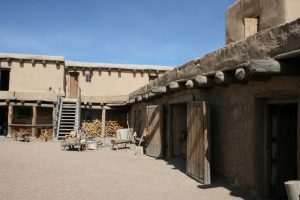
VISITORS ARE WELCOME TO ROAM THROUGH ALL AREAS OF THE FORT OR TAKE A GUIDED TOUR.
© Deborah Erickson
A visit to Bent’s Old Fort National Historic Site in La Junta, Colorado is certain to transport you back to the time when traders, mountain men and pioneers forged the way into the American West.
FOR INFORMATION ABOUT BENT’S OLD FORT NATIONAL HISTORIC SITE


